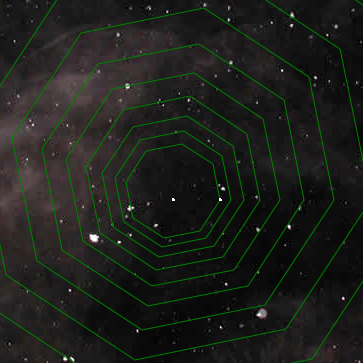Dr Who
 'Recreate this space age animation to discover the mathematics behind it!'
'Recreate this space age animation to discover the mathematics behind it!'
This task is really easy to explain! Watch the videos below and try to recreate them using dynamic geometry software. Of course, it will not be quite so easy to complete! Making geometry dynamic really helps to understand the properties of a situation. In the videos below, only one feature of the construction is changing at any one time. The task is to look at how the images are changing and try to figure out what could be causing those changes. In the first instance you need to gather evidence, describe what you can see and describe the changes you are witnessing. It is equally important to consider what is not changing. With this evidence and in discussion with the class you should begin to reconstruct what you can see and hopefully recreate an animation with similar properties for yourselves. Good Luck! (There are more tasks of this nature here on the Animated Questions page)
Resources
Access to computers and dynamic geometry software is needed for this activity. There are some questions just below the videos to help approach the task. Teachers can prepare for this activity by reading these teacher notes ![]() Dr Who.
Dr Who.
Dr Who (part 1)
This first video shows what happens when one feature of the construction is changed.
Dr Who (part 2)
This video shows the same situation as the first but with a different feature being changed.
Dr Who (part 3)
This video has 'the twist in the tail!' to really get you thinking. The same feature is being changed as in the first video but this one takes the changes a bit further.
Questions
These are the questions to think about whilst looking at the videos. Answers to these questions should come from investigation and discussion with the class. They should then help with the recreation of the animations.
- Why are there lots of shapes?
- How are they changing?
- What is not changing?
- What mathematics describe the way they are changing?
- What are the possible variables in the scenario?
- Where does the second pattern come from and why?
Description
The following describes a brief overview of the task.
- Watch the first video and have and set the problem
- Have discusion about what is going on. What Changes? What stays the same?
- Repeat the above with the second and third videos
- Students try to recreate their own animations with similar properties.
